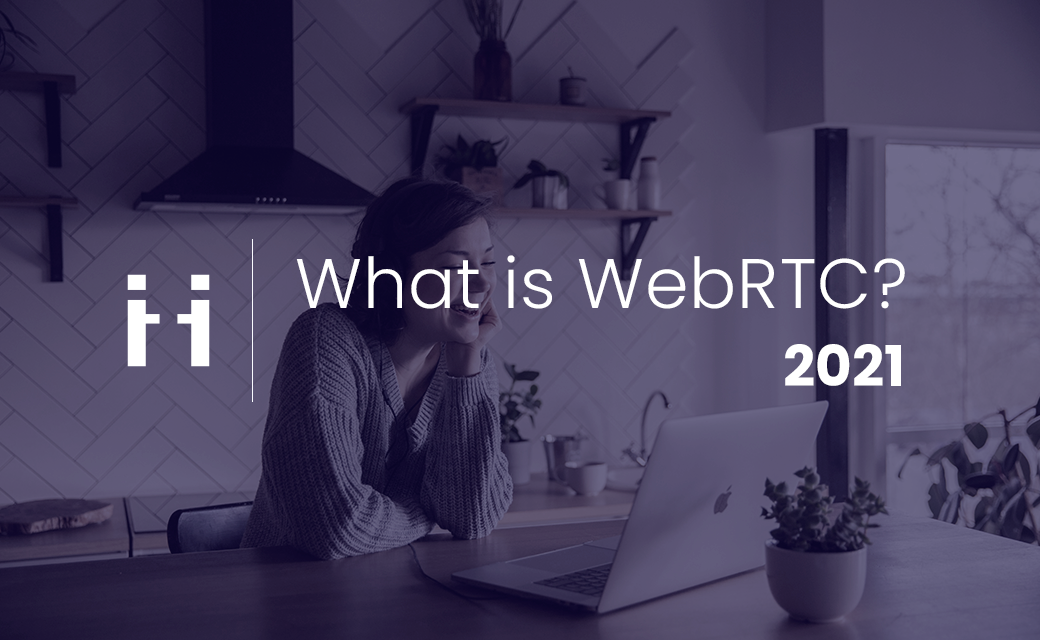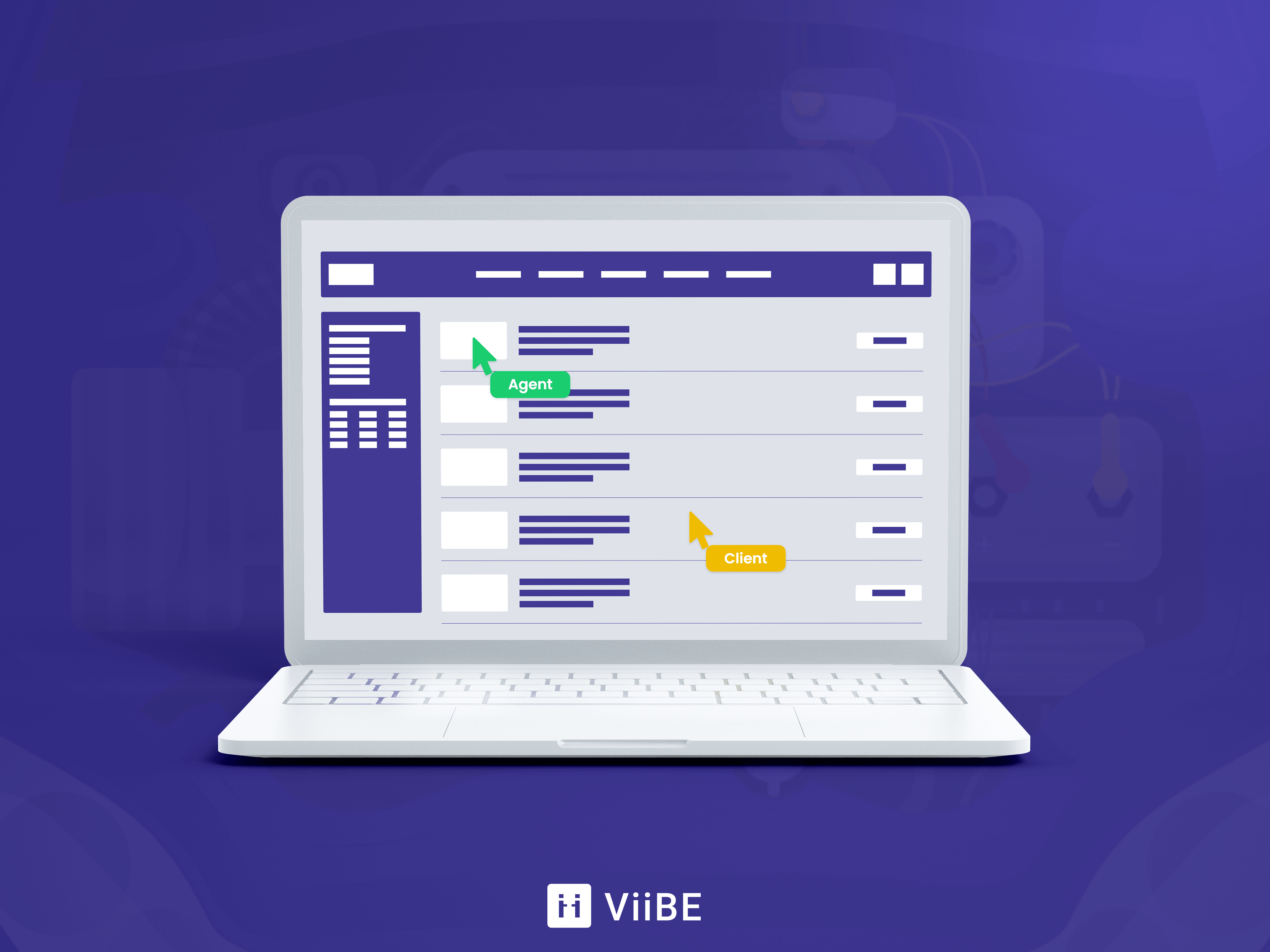What is WebRTC?

- Charles Street
- May 18, 2021
Share this article
Contents
Share this article
Contents
For a long time, screen sharing or video calling required downloading specific software or using now-obsolete tools like Adobe Flash Player. This software poses a security risk because of the need to install software. Downloads open up the door for malicious code that exploits vulnerabilities in the software. In response to this need, WebRTC technology was created ten years ago. WebRTC is a technology that allows audio and video communication without downloading or installing any software. The WebRTC project is currently maintained by Google and is supported by other companies like Apple, Microsoft, and Mozilla.
This technology is behind video-calling web apps like Facebook Messenger, Google Meet, and ViiBE. It is also used in most co-browsing screen-sharing software. Because WebRTC is free and open-source, it has become widely used in many different technologies. So what technology does WebRTC use to make download-free video communication possible?
1. How does WebRTC work?
WebRTC stands for Web Real-Time Communication. It is a technology standard that uses two main technologies: media capture devices and peer-to-peer communication. Media capture uses the media streams API to connect to video cameras and microphones. Peer-to-peer establishes a connection between two web browsers to send and receive data by opening and closing data channels. Peer-to-peer is a technology that enables you to send data between peers directly. WebRTC uses two specific Network Address Translations (NATs): STUN and TURN. To establish the connection, these use Internet Connectivity Establishment (ICE) candidates as a signaling protocol.
STUN (Session Traversal Utilities for NAT) servers establish the link between the two peers on a specific port through their public IP addresses. After this connection is established, the two peers can exchange data between each other without needing to pass through a server. If there is a failure with the peer connections, then WebRTC tries using a TURN (Traversal Using Relays around NAT) server. TURN servers can exchange data between the two peers when the connection fails. WebRTC is an open source software, which means that you can freely modify it to make your own web app. Modern browsers like Google Chrome, Mozilla Firefox, and Apple Safari all support WebRTC.
2. Is WebRTC an API?
The WebRTC standard encompasses two main Application Programming Interfaces (APIs): media capture devices and peer-to-peer. APIs manage the connections between different software applications. In this case, WebRTC connects the user’s web browser to an audio or video application. Javascript APIs are the main components behind WebRTC’s functioning. The WebRTC APIs allow web apps to access a user’s camera and microphone and enable two-way video communication.
WebRTC APIs include:
- getUserMedia
- Connection to video cameras and microphones.
- RTCPeerConnection
- Enables streaming video and audio communication via a peer-to-peer connection. Different signal processing protocols exist.
- RTCDataChannel
- Sending of data between peers (opening and closing of data channels.) For example, sharing documents or photos.
- getStats
- Statistics of WebRTC sessions

3. Is WebRTC secure?
WebRTC is more secure than traditional screen-sharing software because it avoids the need to install any software. By limiting access to the user’s system, it protects their data from hacking. WebRTC has many arguments for its safety. Since WebRTC is used within a browser, it benefits from the browser’s built-in and regularly updated security measures. When accessing a user’s camera or microphone, WebRTC applications must always request the user’s permission. Some specific WebRTC applications can share the user’s screen while blocking sensitive information such as credit card details.
WebRTC uses two different protocols, Datagram Transport Layer Security (DTLS) and Secure Real-time Transport Protocol (SRTP), for encryption which provides additional security. Like any software, WebRTC is regularly updated to protect against any perceived vulnerabilities. Google’s Project Zero team is dedicated to security updates for the technology. WebRTC has now been around for a decade, and its use cases continue to increase exponentially.
4. What is WebRTC good for?
WebRTC is used in a wide variety of applications. It is now used by Google’s Stadia gaming service, which provides console-level gaming from any browser. Co-browsing solutions use WebRTC to allow users to share their screen instantly via a web browser. Co-browsing is useful for pre-sales customer interactions. Customers can ask questions, save time while browsing, and be directed to specific web pages. The sales representative follows along as the customer browses and can anticipate their needs or interests.
ViiBE uses WebRTC to power its video chat solution. Thanks to WebRTC, ViiBE is installation-free and platform-agnostic. Whether you’re using a smartphone, computer, or even augmented reality hardware, ViiBE works well on any device. Users access the call from a simple web link, and they are connected right away. ViiBE allows users to make video calls, text chat, and easily send documents and photos. Its ticketing system offers a standalone solution for storing multiple calls under a single ticket and uses tags to follow ongoing issues. ViiBE tickets can easily integrate into existing customer relationship management software such as Zendesk, Salesforce, or Microsoft Dynamics.
ViiBE’s knowledge management tool makes it easy to store past customer interactions for training or quality control purposes. At the end of a call, users answer a quick survey that automatically updates KPIs for individual call agents and your center’s overall performance. WebRTC’s design means that all of these powerful features are installation-free for both the customer and your company. ViiBE updates automatically, and Version 4 is now available with new features like call scheduling.
5. Conclusion
WebRTC is an important API powering many new technologies such as co-browsing and video calling. It has become more and more popular with time, and its security measures are still among the best. ViiBE takes the power of WebRTC to call center technology. Its video chat tools are proven to improve customer satisfaction and reduce costs. ViiBE has already become a success story for large companies like Air France and Decathlon. Air France improved their First Call Resolution rates by 25%, and Decathlon increased their Net Promoter Score by 25% by using ViiBE. Whether your company is big or small, ViiBE’s solutions are customizable to your company’s size and use cases. ViiBE’s suite of features makes good customer service as easy to implement as WebRTC.





